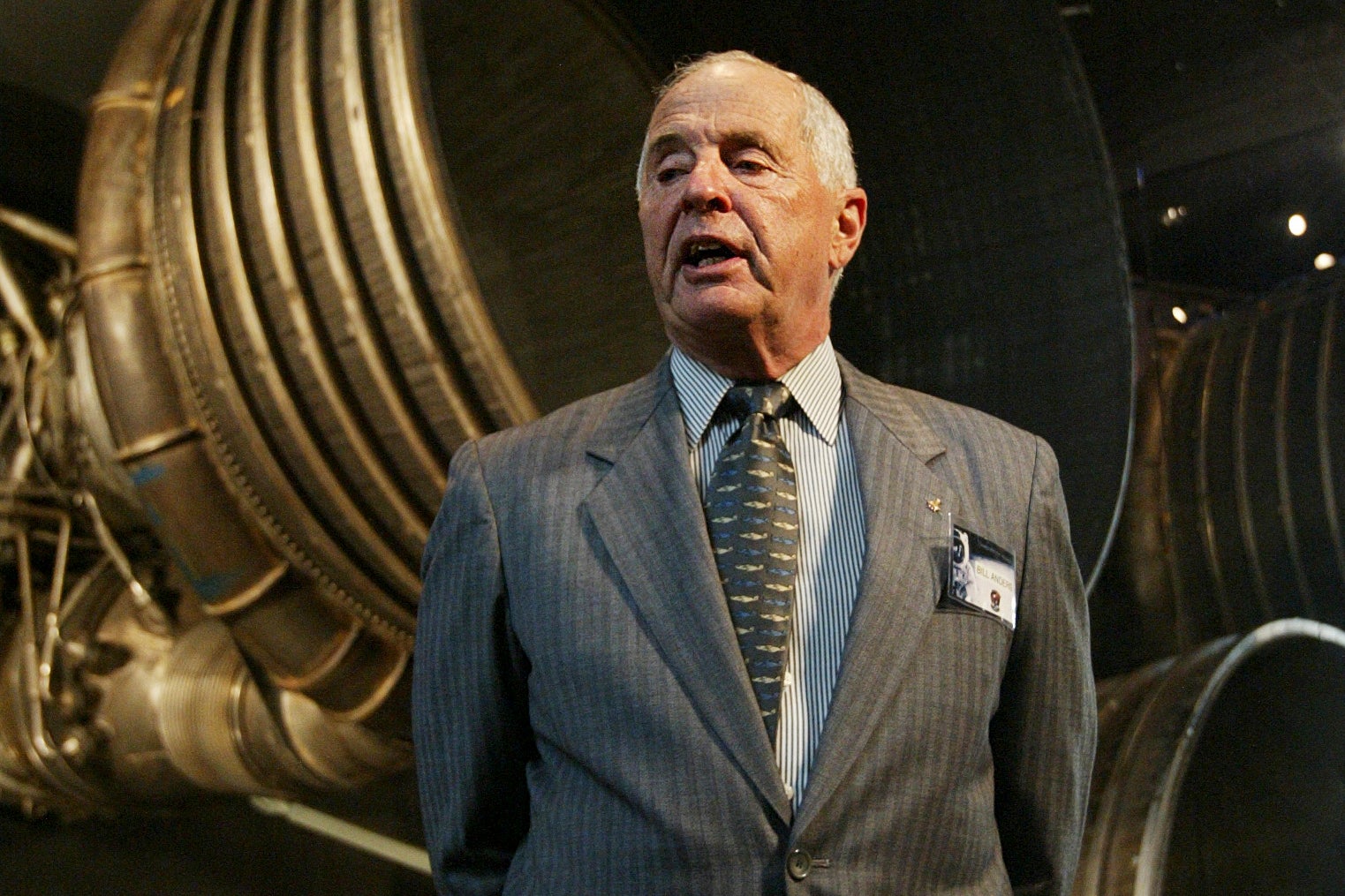Famed Apollo 8 astronaut William Anders, 90, dies in horror crash when his plane nose-dives into waters
Williams Anders was part of the first manned mission to leave the Earth’s gravitational sphere. He took a famous photo of the Earth from space on December 24, 1968.

William Anders, an Apollo astronaut who snapped the iconic 1968 “Earthrise” photo of the Earth while orbiting the moon, died at age 90 in a plane crash near the San Juan Islands on Friday.
Greg Anders, the astronaut’s son, confirmed to the Associated Press his father died in the crash.
“The family is devastated,” he said in a statement. “He was a great pilot. He will be missed.”
William Anders, who attained the rank of major in the Air Force before the Apollo flight, was piloting the plane that crashed on Friday, according to Fox 13 Seattle, citing social media posts from friends and family of the former astronaut.
The plane, according to flight data and FAA records obtained by the outlet, was a vintage Air Force T-34 Mentor owned by Anders, who lived in San Juan County.
Police and maritime officials are responding to the crash site.
The number of passengers onboard the plane is unclear, according to the San Juan County Sheriff’s Office.

Video of the crash shows a small aircraft heading straight down towards the surface of the water near Orcas and Jones Islands, then skidding along the surface and exploding in a ball of fire. Witnesses told KING News the aircraft appeared to be performing a loop maneuver right before it crashed, about 80 feet from Jones Island.
“But it was too low and ... it didn’t clear the water,” Philip Person, who saw the crash from a cabin onshore, told the outlet.
“I could not believe what I was seeing in front of my eyes,” Person said. “It looked like something right out of a movie or special effects. With the large explosion and flames and everything.”

Personnel from the San Juan County Sheriff’s Office, US Coast Guard, and Washington Department of Fish and Wildlife are responding to the crash, according to county officials.
The National Transportation Safety Board and the FAA are investigating the crash.
Anders was part of the Apollo 8 mission, which orbitted the Moon before returning to Earth.
The mission circled the Moon for 20 hours, the first time humans entered lunar orbit.
“Earthrise” is one of the most famous photos in history and is credited with helping inspire the growing environmental movement of the late 1960s.
Reflecting on the image in a 2015 interview, Anders told Forbes, “The view points out the beauty of Earth, and its fragility. It helped kick start the environmental movement.”
US Senator Mark Kelly of Arizona, a former NASA astronaut, paid tribute to Anders in a post on X.
“Bill Anders forever changed our perspective of our planet and ourselves with his famous Earthrise photo on Apollo 8,” he wrote. “He inspired me and generations of astronauts and explorers. My thoughts are with his family and friends.”
This is a breaking news story and will be updated with new information.
Join our commenting forum
Join thought-provoking conversations, follow other Independent readers and see their replies
Comments
Bookmark popover
Removed from bookmarks